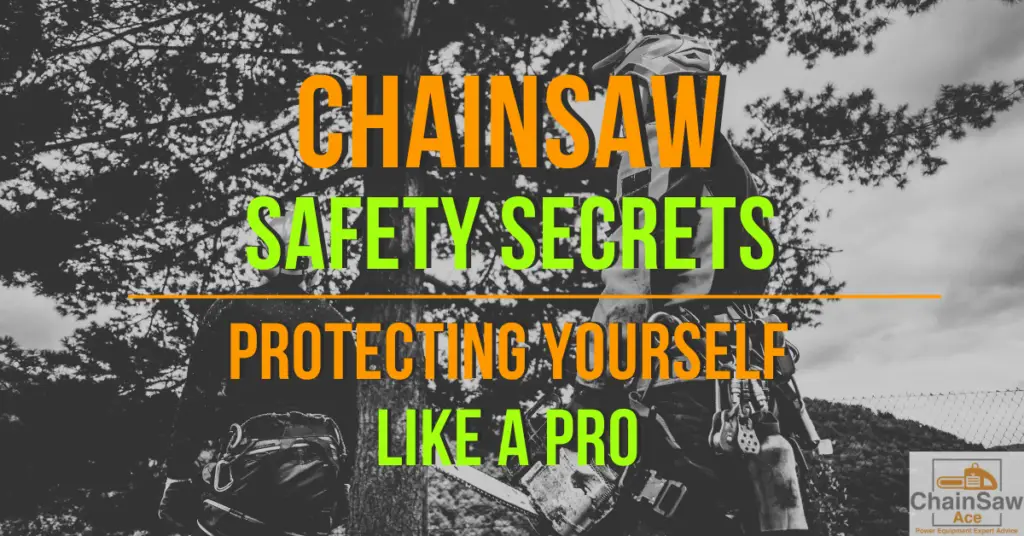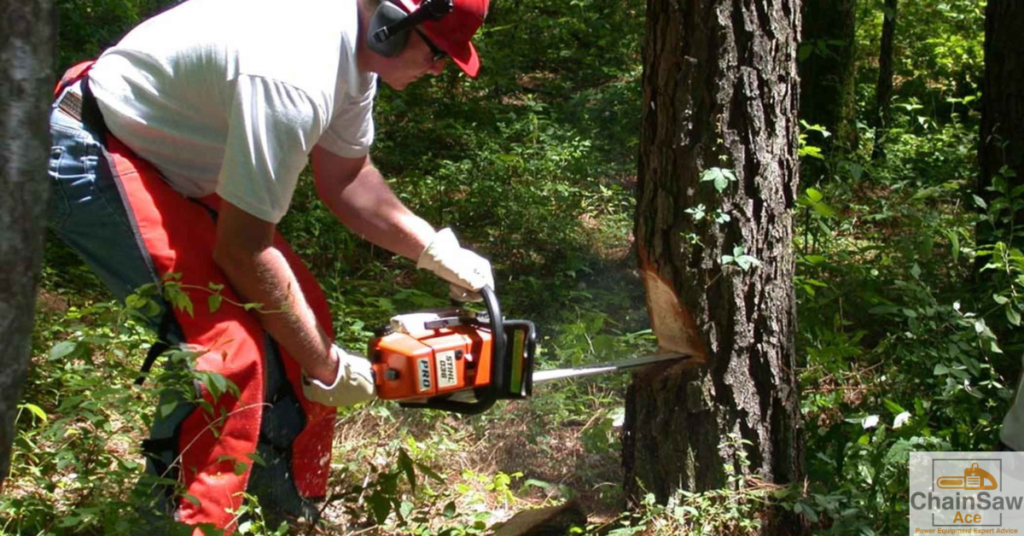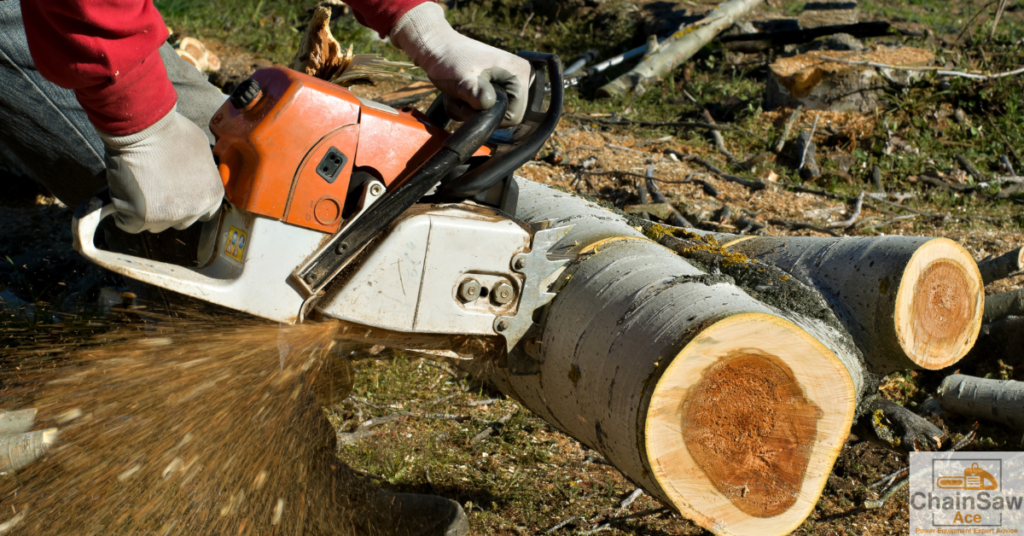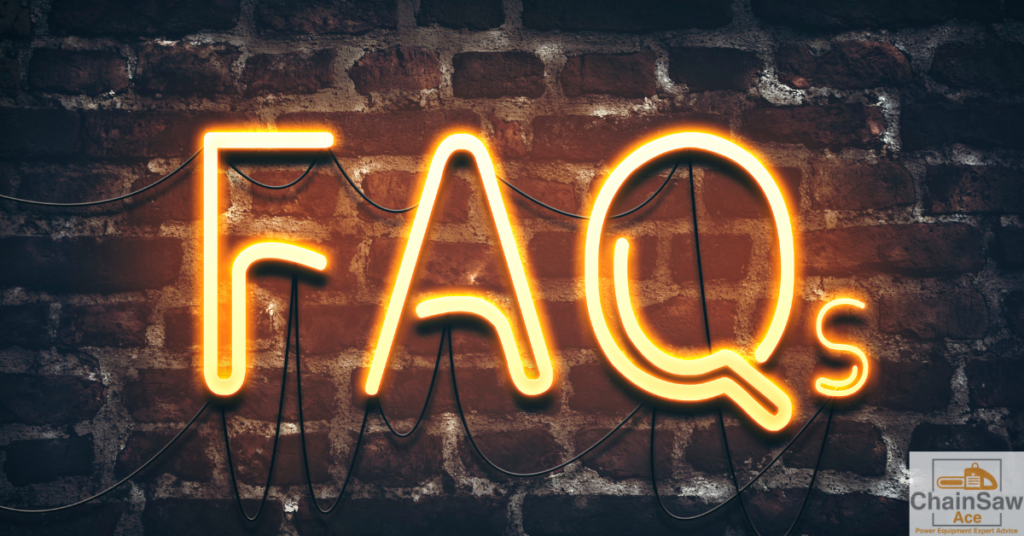
Chainsaws are powerful and versatile tools, but they also pose significant risks when not used correctly. Understanding how to stay safe around chainsaws is essential for anyone who plans to operate one.
This article covers essential chainsaw safety tips, including personal protective equipment, selecting the right chainsaw, safe operating techniques, and chainsaw maintenance.
By following these guidelines, you can reduce the risk of injury and ensure a safe and efficient experience when using a chainsaw.
- Importance of Personal Protective Equipment (PPE)
- Selecting the Right Chainsaw for the Job
- Operating a Chainsaw Safely
- Chainsaw Maintenance and Storage
- Staying Safe During Winter Storm Chainsaw Use
- Wrapping Up
- Frequently Asked Questions
- How do I protect myself from a chainsaw?
- What is the safest way to use a chainsaw?
- What are six safety tips for using chainsaws?
- How do you avoid a kickback from a chainsaw?
- What are some essential chainsaw maintenance tasks?
- How should I store my chainsaw when not in use?
- What should I consider when selecting a chainsaw?
- How can I stay safe while using a chainsaw during winter storms?
- What are some precautions for post-storm chainsaw cleanup?
- What is the purpose of a chain brake on a chainsaw?
- Why is it important to warm up a chainsaw in cold conditions?
Importance of Personal Protective Equipment (PPE)
Essential PPE for Chainsaw Use
Personal Protective Equipment (PPE) is crucial in minimizing the risk of injury while using a chainsaw. The following PPE is recommended when operating a chainsaw:
- Safety goggles or a face shield to protect your eyes from flying debris
- Hearing protection, such as earplugs or earmuffs
- A hard hat to protect your head from falling objects
- Chainsaw gloves with cut-resistant material and knuckle protection
- Chainsaw chaps or leggings to protect your legs from accidental contact with the chain
- Sturdy, non-slip work boots with steel toe protection
Properly Fitting and Maintaining PPE
Ensure that all PPE fits comfortably and securely, as ill-fitting equipment can impede movement and reduce effectiveness. Inspect PPE regularly for damage, and replace it as needed.
Selecting the Right Chainsaw for the Job

Chainsaw Types and Their Applications
Chainsaws come in various types, including gas-powered, electric, and battery-powered models. Gas-powered chainsaws are the most powerful and versatile, suitable for heavy-duty tasks such as felling trees and cutting large logs.
Electric chainsaws are ideal for lighter tasks like trimming and pruning, while battery-powered chainsaws offer convenience and portability.
Chainsaw Size and Power Considerations
Select a chainsaw with the appropriate bar length and power for your specific task. A longer bar length is suitable for larger cuts, while a shorter bar length provides more control for precise work.
Remember that a more powerful chainsaw may be harder to handle, so consider your experience level when choosing.
Operating a Chainsaw Safely

Preparing Your Work Area
Before using a chainsaw, clear the work area of potential hazards, such as loose debris, branches, or rocks. Ensure that you have a firm and level surface to stand on, and plan your escape route in case the tree or branch falls unexpectedly.
Chainsaw Starting and Handling Techniques
To start a chainsaw safely, place it on level ground, engage the chain brake, and hold the handle firmly with one hand while pulling the starter rope with the other. Once the chainsaw is running, maintain a stable and balanced stance with your feet shoulder-width apart.
Keep both hands on the chainsaw handles and maintain a firm grip throughout the cutting process.
Safe Chainsaw Cutting Techniques
Follow these guidelines for safe chainsaw cutting:
- Cut at waist level or below, never above shoulder height.
- Avoid cutting with the tip of the chainsaw bar to prevent kickback.
- Use a bucking spike or chainsaw dogs for added stability when cutting through larger logs.
- Keep the chainsaw throttle fully engaged during cutting to maintain optimal chain speed.
- Allow the chain to do the work, applying light pressure without forcing the chainsaw through the material.
Kickback Prevention and Management

Kickback occurs when the chainsaw’s tip contacts an object, causing the saw to suddenly jerk back toward the operator. To minimize the risk of kickback, avoid using the tip of the bar, and maintain a firm grip on the chainsaw with both hands.
If kickback does occur, the chain brake should engage automatically, provided your chainsaw is equipped with an inertia-activated chain brake, stopping the chain from moving. Older chainsaws may not have a chain brake and should only be used by seasoned chainsaw operators.
However, any piece of equipment can fail, and even if your chainsaw has a chain brake, kickbacks can still happen. Make sure to test the chain brake regularly to ensure it is functioning properly.
Chainsaw Maintenance and Storage
Regular Maintenance Checks
Proper chainsaw maintenance is crucial for safe operation. Regularly inspect and maintain the following components:
- Chain tension: Ensure the chain is tight but still able to rotate freely around the bar.
- Chain sharpness: Sharpen the chain as needed to maintain optimal cutting performance.
- Bar and sprocket: Clean and lubricate these components to reduce friction and prolong their lifespan.
- Air filter: Clean or replace the air filter regularly to ensure efficient engine operation.
- Fuel and oil levels: Check and refill as needed, using the appropriate fuel and oil mixtures for your chainsaw’s engine and lubricating oil for the bar and chain.
Proper Chainsaw Storage
When storing your chainsaw, empty the fuel tank, clean the saw, and store it in a dry, well-ventilated area. Always use a protective cover for the bar and chain to prevent injury and damage to the chainsaw.
Staying Safe During Winter Storm Chainsaw Use

Precautions for Cold Weather Chainsaw Use
Cold weather can affect chainsaw performance and safety. Follow these precautions when using a chainsaw in cold conditions:
- Warm up the chainsaw engine before use to ensure smooth operation.
- Check the chain tension more frequently, as cold temperatures can cause it to loosen.
- Be mindful of slippery surfaces and wear additional traction aids if necessary.
- Allow extra time for tasks, as cold weather can slow down your work and increase the risk of accidents.
Safety Tips for Post-Storm Cleanup
After a winter storm, fallen trees and debris may create hazards. Use caution when using a chainsaw for post-storm cleanup:
- Assess the situation carefully and be aware of potential hazards, such as unstable trees or hanging branches.
- Work with a partner when possible for added safety and assistance.
- Be patient and take breaks as needed to avoid fatigue, which can lead to accidents.
Wrapping Up
Chainsaw safety is critical for anyone, including new and season operators. By selecting the right chainsaw, wearing appropriate PPE, following safe operating techniques, and maintaining your chainsaw properly, you can significantly reduce the risk of injury.
Extra precautions should be taken when using chainsaws during winter storms and for post-storm cleanup. By adhering to these safety guidelines, you can help ensure a safe and efficient chainsaw experience.
Remember, chainsaw safety is not something to be taken lightly. It’s crucial to have a full understanding and respect for the power of a chainsaw and the potential hazards of its use.
By following the guidelines outlined in this article, you can ensure a safer and more productive chainsaw experience.
Happy cutting!
Steven R.
Frequently Asked Questions

How do I protect myself from a chainsaw?
Wear proper Personal Protective Equipment (PPE), including safety goggles or a face shield, hearing protection, a hard hat, chainsaw gloves, chaps or leggings, and sturdy, non-slip work boots.
What is the safest way to use a chainsaw?
Follow safe operating techniques, such as preparing your work area, maintaining a stable stance, keeping both hands on the chainsaw handles, cutting at waist level or below, avoiding the tip of the bar, and allowing the chain to do the work.
What are six safety tips for using chainsaws?
- Wear appropriate PPE.
- Select the right chainsaw for the job.
- Prepare your work area.
- Maintain a firm grip on the chainsaw handles.
- Follow safe cutting techniques.
- Perform regular chainsaw maintenance.
How do you avoid a kickback from a chainsaw?
Avoid using the tip of the chainsaw bar, maintain a firm grip with both hands, and ensure that the chain brake is functioning properly to stop the chain in case of a kickback.
What are some essential chainsaw maintenance tasks?
Regularly check the chain tension, chain sharpness, bar and sprocket condition, air filter, and fuel and oil levels. Perform cleaning, lubrication, and replacement as needed.
How should I store my chainsaw when not in use?
Empty the fuel tank, clean the saw, and store it in a dry, well-ventilated area with a protective cover for the bar and chain.
What should I consider when selecting a chainsaw?
Consider the type of chainsaw (gas-powered, electric, or battery-powered), the appropriate bar length and power for your specific task, and your experience level.
How can I stay safe while using a chainsaw during winter storms?
Warm up the chainsaw engine, check the chain tension more frequently, be mindful of slippery surfaces, and allow extra time for tasks.
What are some precautions for post-storm chainsaw cleanup?
Assess the situation carefully, be aware of potential hazards, work with a partner when possible, and take breaks as needed to avoid fatigue.
What is the purpose of a chain brake on a chainsaw?
A chain brake is a safety feature that stops the chainsaw chain from moving in case of a kickback, helping to prevent injury to the operator.
Why is it important to warm up a chainsaw in cold conditions?
Warming up a chainsaw in cold conditions is important as it ensures smooth engine operation. Cold temperatures can affect the performance of the chainsaw engine, making it harder to start and less efficient during operation.
A brief warm-up period allows the engine to reach an optimal operating temperature and helps to prevent potential damage caused by running a cold engine under full load.

